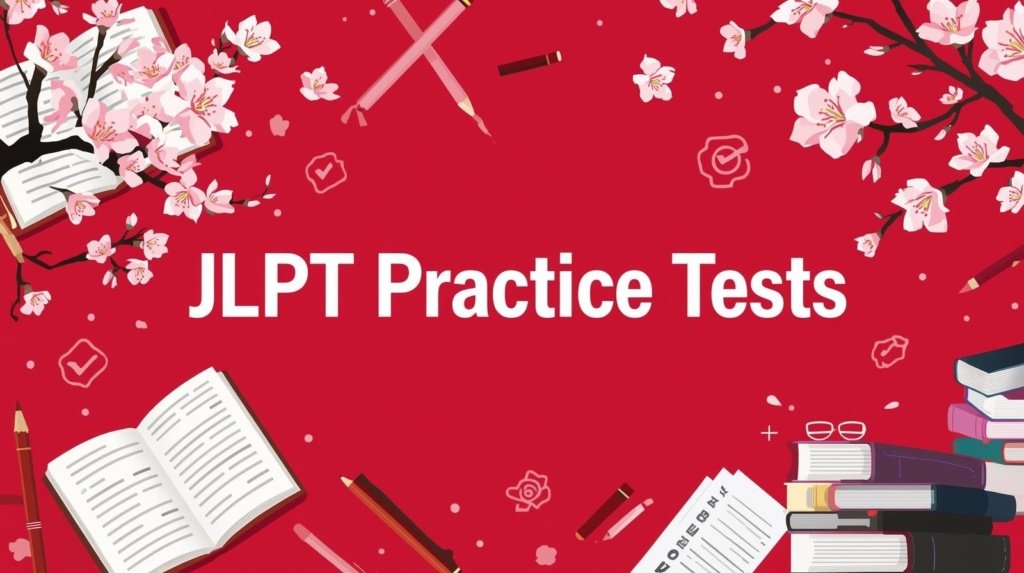Learning Japanese is an exciting and rewarding journey, but passing the Japanese Language Proficiency Test (JLPT) requires the right strategy and study resources. Whether you are a beginner aiming for JLPT N5 or an advanced learner targeting N1, choosing the top study materials for JLPT preparation can make a huge difference.
In this comprehensive guide, we’ll explore everything you need to succeed — from books, practice tests, and flashcards to online platforms and free resources. By following this guide, you can structure your study effectively, focus on weak areas, and achieve your language goals with confidence. JLPT Preparation Classes Near Me
Why Choosing the Right Study Materials Matters
Many learners face challenges not because Japanese is inherently difficult, but because they rely on scattered, ineffective, or incomplete study resources. Proper JLPT preparation materials help in multiple ways: Official Website

- Structured Learning: They provide a step-by-step approach for grammar, vocabulary, kanji, and listening practice.
- Focused Exam Preparation: JLPT-specific materials highlight the exam’s format, question types, and scoring criteria.
- Tracking Progress: Practice tests and quizzes allow learners to identify weak areas and monitor improvement.
- Confidence Boost: Using the right materials ensures a more effective study plan and reduces exam anxiety.
Selecting the right study materials can save months of inefficient study time and ensure your preparation is consistent, productive, and enjoyable.
Best JLPT Study Books
Books remain the backbone of any JLPT study plan, providing structured lessons and exercises for grammar, vocabulary, kanji, and reading comprehension. The most trusted options include Minna no Nihongo and Genki for beginners, Sou Matome and Shin Kanzen Master for intermediate to advanced levels, ensuring comprehensive preparation across all JLPT stages.
- Minna no Nihongo Series
- Perfect for JLPT N5 and N4, covering grammar, vocabulary, and reading comprehension.
- Includes exercises, CDs for listening practice, and translation guides.
- Genki Series
- Beginner-friendly and ideal for structured learning.
- Focuses on real-life conversation and essential grammar.
- Shin Kanzen Master Series
- Designed for N2 and N1 learners, with advanced grammar, reading, listening, and kanji practice.
- Provides detailed explanations and exercises for each JLPT section.
- Sou Matome Series
- Weekly structured learning for all levels, including kanji, vocabulary, reading, and listening.
- Allows learners to set achievable goals and track daily progress.
: Kickstart your JLPT preparation with expert guidance at TLS – The Japanese Language School. Call +91 8700956038 to access recommended books and study plans. JLPT Preparation Guide
JLPT Practice Tests
One of the most effective ways to prepare for the JLPT is by taking practice tests. They help you understand the exam format, improve time management, identify strengths and weaknesses, reinforce grammar and vocabulary knowledge, and build confidence under real exam conditions, ensuring a more focused and effective preparation.

- Understand the exam format and timing.
- Identify strong and weak areas in grammar, vocabulary, and listening.
- Gain confidence under real exam conditions.
Recommended resources for practice tests:
Recommended resources for JLPT practice tests include official JLPT past papers available on the JLPT website, online mock exams from platforms like Nihongo-Pro and JLPT Sensei, and printable practice tests for offline study. These resources help simulate exam conditions, track progress, and identify areas for improvement.
- Official JLPT Practice Papers – Available for free on the JLPT website.
- Nihongo-Pro and JLPT Sensei online mock exams – Simulate real-time testing with scoring.
- Printable past tests – Ideal for offline practice at home.
Tip: Always review your answers carefully and note patterns in mistakes. Focus your study on recurring problem areas. JLPT Preparation Classes Near Me
JLPT N5 Prep Materials
For beginners starting with JLPT N5, building a solid foundation is essential. Key focus areas include basic grammar using Minna no Nihongo, essential vocabulary with flashcards, mastering around 100 kanji characters, and improving listening skills through Genki audio lessons or beginner-friendly podcasts, ensuring a well-rounded start to language learning.
- Grammar: Minna no Nihongo beginner chapters, Tae Kim’s Japanese Grammar Guide.
- Vocabulary: Sou Matome N5 series or digital flashcards (Anki/Quizlet).
- Kanji: Start with 100 essential kanji characters using study books or apps.
- Listening: Genki CDs, YouTube JLPT N5 listening exercises, and beginner-friendly podcasts.
Study Tip: Spend at least 30 minutes daily reviewing vocabulary flashcards and 15–20 minutes on kanji writing practice. Consistency is more important than long study sessions.
JLPT N4 Prep Materials
After N5, JLPT N4 introduces more complex grammar structures, additional kanji, and expanded vocabulary. Recommended study materials include Minna no Nihongo N4, Genki II, and Sou Matome N4 for structured lessons, along with kanji practice books, vocabulary flashcards, and listening exercises to strengthen comprehension and exam readiness.
- Books: Minna no Nihongo N4, Genki II, and Sou Matome N4.
- Kanji: Focus on an additional 150–200 characters.
- Listening: Simple dialogues, podcasts, and YouTube lessons targeted at N4.
- Vocabulary Practice: Use flashcards and mobile apps for daily review.
Study Tip: Combine grammar and kanji practice. Writing sentences using new grammar points and kanji strengthens memory.
JLPT N3 Prep Materials
JLPT N3 serves as the bridge between beginner and advanced levels, requiring learners to balance speed and comprehension. Effective preparation includes studying Sou Matome N3 and Shin Kanzen Master N3, practicing 400–500 kanji, expanding vocabulary, improving listening skills, and completing timed mock exams.
- Books: Sou Matome N3 and Shin Kanzen Master N3 for grammar and reading.
- Kanji & Vocabulary: Focus on 400–500 new kanji and 1,500+ words.
- Listening: JLPT-style audio lessons, podcasts, and NHK News Easy.
- Practice Tests: Time-bound mock exams to improve speed and accuracy.
Study Tip: Create weekly schedules splitting grammar, vocabulary, reading, and listening practice. Use daily revision to retain knowledge. JLPT N3 Structure
JLPT N2 Prep Materials
For JLPT N2, preparation becomes more intensive, focusing on advanced grammar, reading comprehension, and extensive vocabulary. Recommended materials include Shin Kanzen Master N2 and Sou Matome N2, alongside kanji practice, listening exercises, and timed practice tests for exam readiness.
- Grammar & Reading: Shin Kanzen Master N2 series covers advanced grammar, reading comprehension, and practice exercises.
- Vocabulary: Use flashcards with N2-level words and kanji compounds.
- Listening: NHK News, JLPT N2 podcasts, and online listening exercises.
- Practice Tests: Full-length mock tests under timed conditions.
Study Tip: Focus on reading long passages and practicing inferential comprehension. Pay attention to keigo (polite Japanese) and context clues.
JLPT N1 Study Guide
The JLPT N1 is the most advanced level, assessing complex grammar, advanced kanji, and nuanced language skills. Recommended study materials include Shin Kanzen Master N1, Sou Matome N1, advanced vocabulary flashcards, and immersive listening exercises.
- Shin Kanzen Master N1 Series – Advanced grammar, reading, listening, and vocabulary.
- Vocabulary Flashcards: Focus on high-level kanji compounds and idiomatic expressions.
- Listening Practice: Podcasts, NHK News, Japanese dramas, and real conversations.
- Practice Tests: Full-length, timed N1 mock exams for exam readiness.
Study Tip: Consistency is key. Devote at least 2–3 hours daily to N1 preparation, balancing grammar, reading, kanji, and listening. JLPT Exam Registration & Results 2025
JLPT Resources
You don’t always need paid materials to prepare effectively for the JLPT. Several free resources offer high-quality learning tools, including JLPT Sensei for grammar and kanji, Tae Kim’s Grammar Guide for comprehensive explanations, and YouTube channels for listening and practice exercises. These resources can supplement books and apps, providing flexible, accessible study options for all levels.
- JLPT Sensei: Free grammar, vocabulary, and kanji lists for all levels.
- Tae Kim’s Grammar Guide: Comprehensive explanations suitable for beginners and intermediates.
- Anki Decks: Pre-made flashcards for vocabulary, kanji, and grammar.
- YouTube Channels: Lessons for listening practice and exam strategies.
Free resources can supplement books and apps, allowing flexible learning.
JLPT Grammar Practice
Grammar is central to JLPT exams at every level. Effective JLPT grammar practice includes:
- Structured exercises in Sou Matome or Shin Kanzen Master books.
- Writing sample sentences using new grammar points.
- Online quizzes for instant feedback.
- Daily review and spaced repetition for retention.
Tip: Break grammar into smaller daily chunks. Mastering 3–5 new grammar points per day is more effective than cramming. JLPT Preparation Resources
JLPT Vocabulary Flashcards
Memorizing vocabulary is easier with JLPT vocabulary flashcards:
- Digital Apps: Anki, Quizlet, or Memrise.
- Organization: Group words by topic or JLPT level for faster learning.
- Spaced Repetition: Review frequently but gradually increase intervals for long-term retention.
- Examples: Include sample sentences and kanji for context.
Tip: Review flashcards for 20–30 minutes daily, and combine with reading exercises for better retention.
JLPT Listening Tools
Listening comprehension can be challenging, but with the right tools, it becomes manageable. Using audio lessons from textbooks, podcasts like Nihongo Con Teppei, JLPT-specific online exercises, and real-world content such as Japanese news or dramas helps learners recognize grammar p
- Audio tracks from Genki and Sou Matome series.
- Podcasts like Nihongo Con Teppei and JapanesePod101.
- NHK News Easy for realistic listening exercises.
- Apps with JLPT-specific listening drills.
Study Tip: Listen daily during commutes or free time. Focus on identifying keywords, grammar structures, and context. Mastering JLPT N5
JLPT Kanji Study Materials
Kanji memorization is critical for passing JLPT exams:
- Remembering the Kanji by Heisig – Systematic approach for all levels.
- Kanji Look and Learn – Illustrated exercises for easy memorization.
- Digital Flashcards: Anki decks and Quizlet pre-made kanji cards.
- Practice Writing: Repetition helps retain memory and writing skills.
Tip: Study 20–30 kanji per day and revise daily. Kanji mastery requires patience and consistency.
JLPT Online Platforms
Online platforms make JLPT learning interactive and flexible by offering gamified kanji practice, grammar drills, and immersive reading and listening exercises. Platforms like Bunpro, WaniKani, LingQ, and JapanesePod101 allow learners to study at their own pace, track progress, and reinforce lessons from books and flashcards effectively.
- WaniKani: Gamified kanji and vocabulary learning.
- Bunpro: Structured grammar review platform for all JLPT levels.
- LingQ: Focuses on reading and listening immersion.
- JapanesePod101: Audio-visual lessons from N5 to N1, including real-life conversations.
Blending books, flashcards, practice tests, and online tools creates a balanced and effective preparation plan.
FAQs on JLPT Study Materials
1. What are the best study materials for JLPT preparation?
When it comes to JLPT preparation, relying on a single resource is usually not enough. The most effective approach is to combine multiple types of study materials. Textbooks provide structured lessons on grammar, vocabulary, and kanji, while practice tests simulate real exam conditions, helping you measure your progress. Flashcards allow for quick and effective memorization of vocabulary and kanji, especially when using apps with spaced repetition like Anki. Online platforms add an interactive element, offering quizzes, listening exercises, and community support. By using this combined approach, you ensure balanced development in all areas—reading, listening, grammar, and writing—and maximize your chances of success.
2. Which JLPT books should I use for N5, N4, N3, N2, and N1 levels?
Choosing the right books depends on your level:
- N5/N4: Beginners should start with Minna no Nihongo and Genki. These books introduce essential grammar, vocabulary, and kanji while including practical exercises and listening practice. They help build a strong foundation.
- N3: For intermediate learners, Sou Matome N3 and Shin Kanzen Master N3 provide focused lessons on grammar, reading comprehension, and vocabulary. These books bridge the gap between basic and advanced levels.
- N2/N1: Advanced learners should use Sou Matome N2/N1 and Shin Kanzen Master N2/N1. These books cover complex grammar structures, idiomatic expressions, advanced kanji, and reading comprehension exercises. N1-focused books also include high-level listening exercises and mock exams.
Tip: Always complement your book study with flashcards, online exercises, and practice tests for the best results.
3. Are there free JLPT study resources available online?
Yes! Many free resources are available for learners at all levels, which are ideal for supplementing your paid materials:
- JLPT Sensei: Offers free grammar guides, vocabulary lists, and kanji practice for all levels.
- Tae Kim’s Grammar Guide: Comprehensive explanations suitable for beginners and intermediates.
- YouTube Channels: Many channels provide listening exercises, grammar lessons, and full-length practice tests. Examples include “Japanese Ammo with Misa” and “Learn Japanese from Zero.”
- Apps: Free apps like Duolingo, LingQ (limited free version), and Quizlet decks provide interactive practice.
Free resources are particularly helpful if you’re just starting or want extra practice without investing in multiple books.
4. How can I effectively use JLPT practice tests to prepare?
Practice tests are essential because they simulate the actual exam experience. Here’s how to use them effectively:
- Set Exam Conditions: Take the test in a quiet environment and adhere to the official timing.
- Analyze Mistakes: Review incorrect answers to identify patterns in grammar, vocabulary, or kanji errors.
- Focus on Weak Areas: Tailor your study plan to strengthen areas where mistakes frequently occur.
- Repeat Regularly: Taking multiple tests over time helps track your progress and improves speed and confidence.
Tip: Keep a notebook for errors and review them daily—this makes practice tests a learning tool, not just an assessment.
5. What are the top JLPT grammar study guides?
Grammar is the backbone of JLPT exams, and mastering it is essential at every level. Two of the most recommended grammar guides are: JLPT N2 Preparation
- Sou Matome Series: Provides structured weekly lessons, exercises, and reviews. It is suitable for N5–N2 learners and helps reinforce grammar points systematically.
- Shin Kanzen Master Series: Ideal for N2–N1 learners. This series includes detailed grammar explanations, example sentences, reading passages, and exercises to apply knowledge.
Tip: Combine reading explanations with active practice, such as writing your own sentences using new grammar points.
6. Which JLPT vocabulary flashcards are recommended for beginners?
Flashcards are one of the most effective ways to memorize vocabulary and kanji. Beginners should focus on:
- Digital Platforms: Anki and Quizlet offer pre-made decks for N5–N4 levels.
- Structured Learning: Flashcards should include kanji, readings, example sentences, and English meanings.
- Spaced Repetition: This method ensures you review words at optimal intervals, improving long-term retention.
- Daily Practice: Short, consistent daily sessions (15–30 minutes) are better than long, irregular sessions.
Tip: Try combining flashcard practice with reading simple texts to see vocabulary in context. JLPT Listening Skills
7. How can I improve listening comprehension for the JLPT exam?
Listening is often a challenging part of the JLPT. To improve effectively:
- Daily Audio Practice: Use audio tracks from textbooks like Genki or Sou Matome.
- Podcasts: Listen to Japanese podcasts like Nihongo Con Teppei or JapanesePod101 for immersive practice.
- Real-World Listening: Watch Japanese dramas, news, or YouTube lessons to get accustomed to natural speech.
- Online Listening Exercises: Many websites provide JLPT-specific listening exercises with transcripts for self-check.
Tip: Try active listening by pausing and repeating sentences aloud, mimicking intonation and pronunciation.
8. What are the best online platforms for JLPT preparation?
Online platforms offer interactive and self-paced learning, making them excellent complements to books:
- Bunpro: Focused on grammar drills and review, with progress tracking and JLPT-aligned lessons.
- WaniKani: A gamified platform for kanji and vocabulary, suitable for all levels.
- LingQ: Offers reading and listening immersion with vocabulary tracking.
- JapanesePod101: Comprehensive audio-visual lessons covering all JLPT levels.
Tip: Use these platforms to reinforce lessons from books and flashcards and to practice daily, even in short sessions. JLPT Exam Dates 2025
9. How much time should I spend on JLPT kanji study daily?
Kanji memorization is essential for all JLPT levels. Recommended daily study:
- 20–30 kanji per day for beginners, gradually increasing as you progress.
- Combine writing practice with recognition exercises to strengthen memory.
- Use apps like WaniKani or Anki to track learning and retention.
- Daily Review: Go back to previously learned kanji to ensure long-term recall.
Tip: Break study into small, consistent sessions—e.g., morning writing practice and evening review—to make kanji retention manageable.
10. Can I pass the JLPT using only online resources and apps?
Yes, it is possible to pass the JLPT using online resources and apps alone, especially if you are self-disciplined and consistent. However, combining apps with books, flashcards, and practice tests ensures more comprehensive preparation:
- Books give structured lessons and exercises.
- Flashcards reinforce vocabulary and kanji.
- Practice tests assess readiness and identify weak areas.
- Online platforms and apps provide flexibility and interactive practice.
Tip: Using a mixed approach allows you to cover all aspects—reading, listening, grammar, and writing—while keeping learning engaging and efficient. JLPT Registration Process 2025
Conclusion
Passing the JLPT requires consistent effort, structured planning, and the right study materials. From beginner JLPT N5 prep materials to advanced N1 study guides, combining books, flashcards, listening tools, practice tests, and online platforms ensures comprehensive preparation. Daily study, revision, and simulated practice tests will build your confidence and improve your chances of success.
Begin your JLPT journey with confidence at TLS – The Japanese Language School. Call +91 8700956038 today to access expert guidance, personalized study plans, and top study materials for JLPT preparation.



